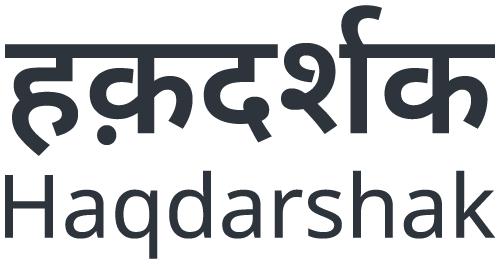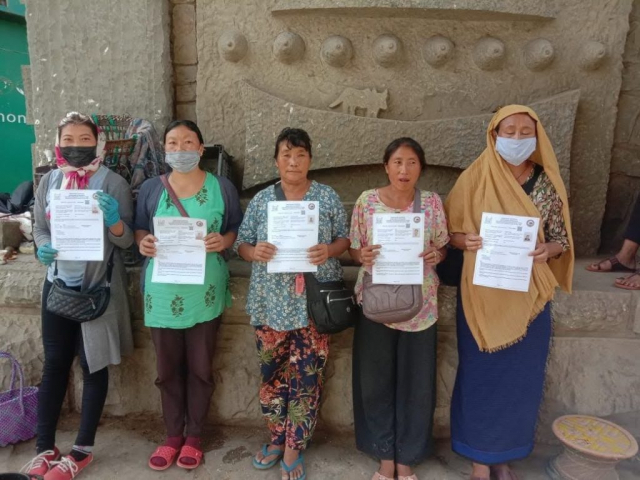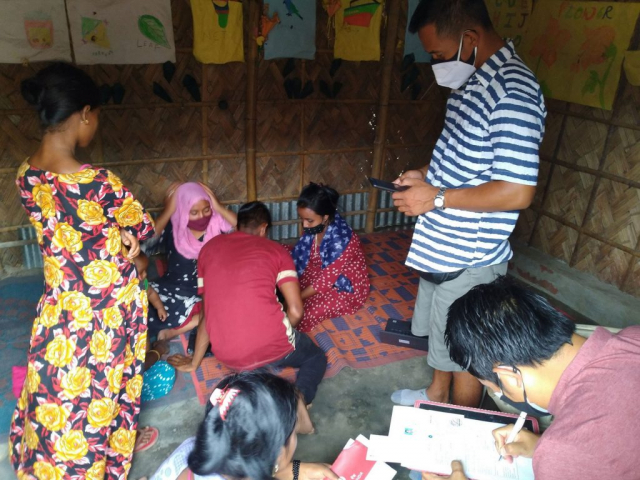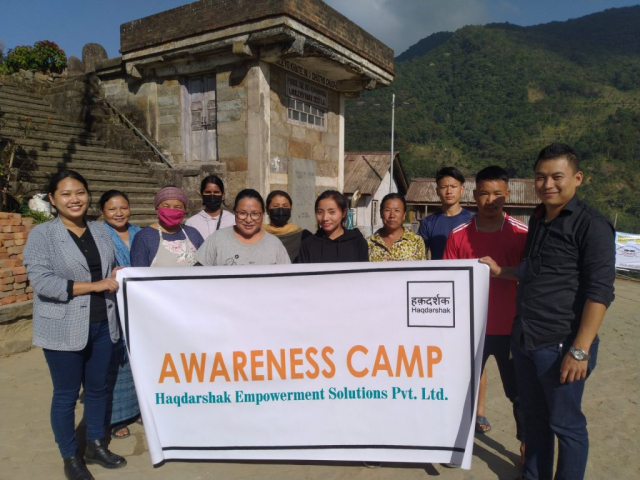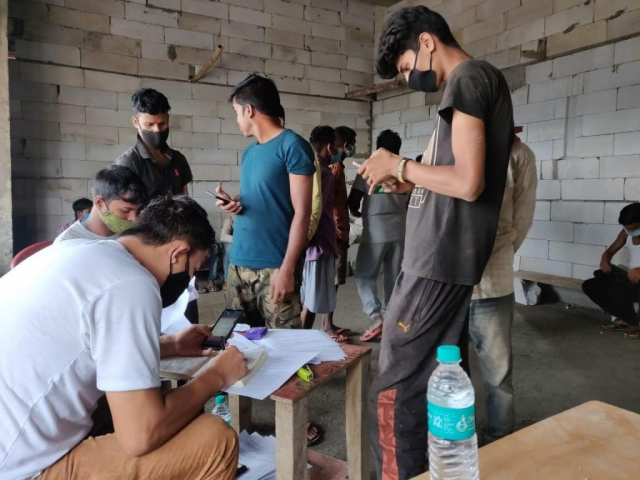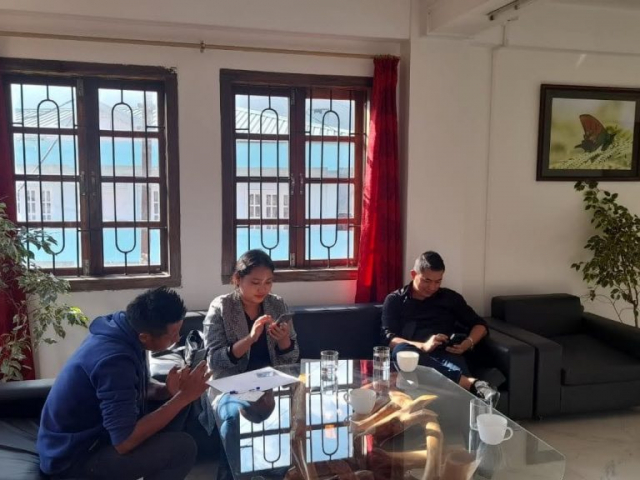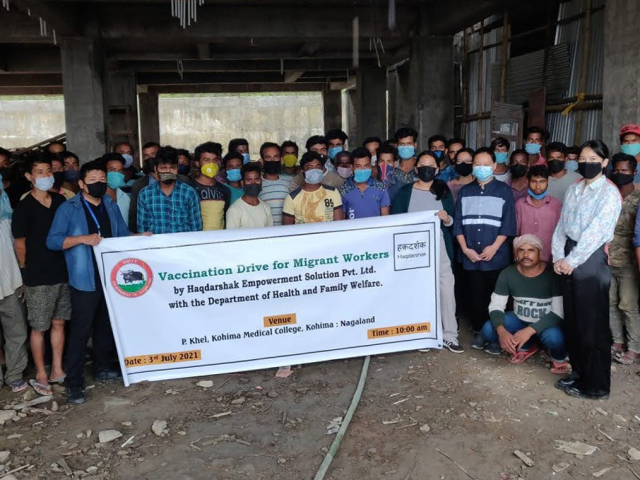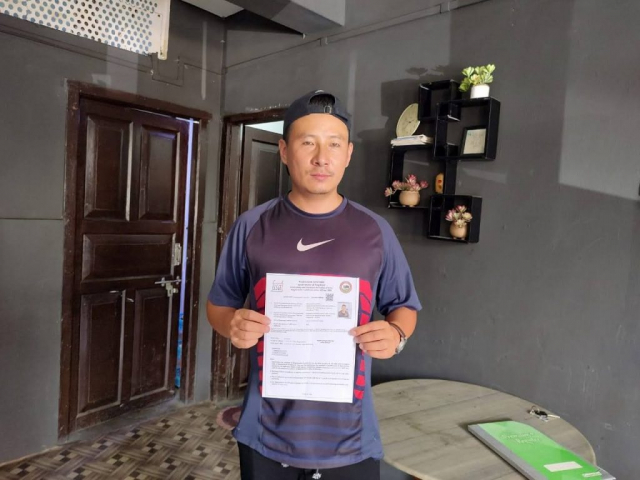A Day in the Life of Yapangsangla
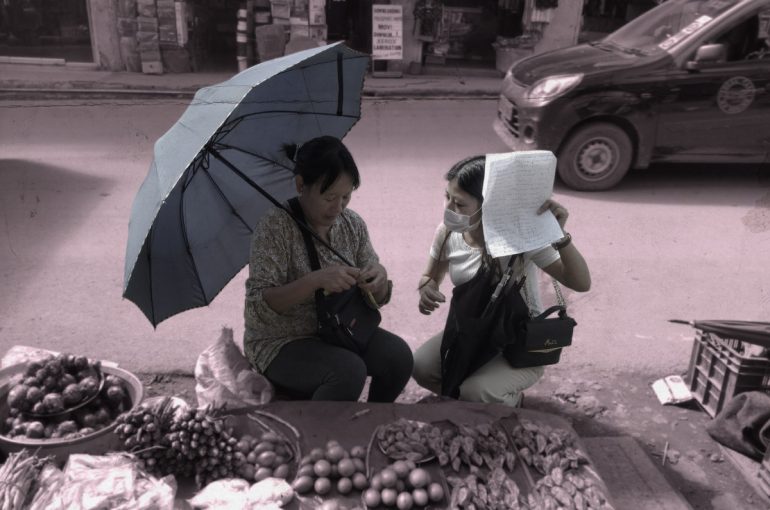
As Told to Piyusha V and Megha Raha
01/ What Senior Coordinators at Haqdarshak Do
My name is Yapangsangla, and I am a Senior Coordinator with Haqdarshak’s Nagaland team. I work together with our team of fellows and Haqdarshikas to spread awareness among entrepreneurial citizens about government schemes that can help their businesses grow, and weather the challenges that small and micro-businesses face while accessing these schemes. We also help them with the application process. While I live in Dimapur, my work takes me to Kohima, Pfutsero, Mokokchung, and other parts of Nagaland on a daily basis.
Our team has zonal and daily meetings to discuss ongoing projects. Together, we strategise implementation plans for ongoing projects and discuss details like which citizens to meet, where to conduct our camp for maximum impact, and which scheme-related information to share. To ensure we reach the right citizens, we collaborate with government officials, SHGs, and other financial institutions.
Typically, I set targets of covering 2-3 villages in a day along with my team. Around 80-100 people usually turn up when we organise a camp. At the camp, we meet citizens to educate them about the different schemes they are eligible for. Citizens frequently require assistance with their application procedures and in resolving scheme-related grievances. In addition to organising the practical aspects of implementation, I monitor and report the project’s progress.
02/ A Typical Day
This is what a typical day looks like. The plan for each day is chalked out the previous evening.
5.00 AM
Today, I am starting my day early. I have to travel to Kohima in a taxi or a bus. It is about 70 km from here. I hope to reach there in 2-2.5 hours, maybe at around 7.30 AM. We are going to meet women street vendors to get their small businesses registered with the Udyam portal. They set up their stalls around 6-6.30 AM, and are more willing to meet us early in the morning or towards the end of the day. It is crucial we synchronise our work with the schedules of the citizens we work with.
7.30 AM
The vendors I will approach now might take time to trust me. I have prepared myself and my team for this. Many of them are in their late 30s and 40s and not very tech-savvy. Once, a woman assumed that we were responsible for the money missing from her bank account. When we investigated the issue, it turned out that her son-in-law had withdrawn the money and not informed her about it. Concerns about data theft and fraudulent activities keep citizens from using digital platforms. I am thinking about a campaign to educate our beneficiaries on data security.
While markets open up quite early in Nagaland, government offices open up at around 10 or 11 AM like in the rest of the country. They shut relatively early, usually at around 3.30 PM. This happens in the North East because the day breaks and ends earlier here. During the summer, the sun rises as early as 4 AM and sets by 6.30 PM. During the winter, it sets between 4 and 4.30 PM. This leaves us with fewer working hours.
10.30 AM
We had some successful registrations today. Other citizens who want to enrol still have some necessary documentation pending. There are a few others whose Aadhaar cards and phone numbers are not linked. I have asked them to visit the Common Service Centre (CSC) to complete the process. We can’t do it online here because of network issues.
In Kohima, finding a CSC is relatively easy. Dimapur is also a commercial hub with multiple CSCs. But in villages around Mokokchung, citizens often need to visit nearby towns for CSCs. To get even a basic service like an Aadhaar-phone linkage, they need to visit the Additional Deputy Commissioner’s office. Many villagers cannot afford to travel from village to town. It is quite exhausting even for me, so I can only imagine the difficulty faced by senior citizens. Most people do not own a private vehicle, and public transport is very limited and expensive. For instance, a bus will start at a fixed hour early in the morning from a village for the town and will return to the village again only in the evening. Missing it by a minute means the entire trip will need to be replanned for another day.
Taxis charge around INR 150-200 for a distance of 4 km. Driving in the sloped landscape becomes difficult, especially during monsoons, and the cost of travel varies with each season. During COVID, the taxi drivers hiked their prices for a one-way trip between Dimapur and Kohima from INR 350 to INR 600 per person, almost double the original amount. Hiring a reserved vehicle can cost INR 2,000. This cost will probably go up further with fuel prices rising every day. Today, as I commuted in and around Kohima, an average taxi ride within a few kilometres cost me INR 200. Places like Pfutsero have no buses or auto rickshaws.
Sometimes, I hire taxis for citizens so that they can get their documents done. It adds to operation costs but ensures quicker access to benefits.
12 Noon
After registrations here, next up is a visit to the nearby village of Khonoma, around 20 km from Kohima. This is how I plan my day so that I can cover most of the fieldwork in one trip. It saves time and money. I would have preferred a shared taxi or a bus as they are cheaper. However, they leave at fixed times. That won’t work for me. I need to reach Khonoma and finish my work with the villagers before 3:30 PM. So, I will hire a private taxi despite the cost.
I hope I am able to finish the tasks at Khonoma. The power supply in this region can be unpredictable. Once, we had to stop operations for an entire day because of the lack of electricity. Since the village is in a remote location, we also deal with poor network connectivity. Challenges like these hinder the pace of our operations. Here as well, most applicants needed their Aadhaar to be linked with their phone numbers. So, we first went back to the District Collector’s office in Kohima before coming all the way back to Khonoma for the rest of the applications.
3:30 PM
It’s already past 3 PM so I will now head back to Dimapur. Since Kohima is not too far off, I will be able to return home by 6-7 PM. When I have to travel to someplace far like Pfutsero, 133 km from my home, it takes almost 6-8 hours.
I’m on the last bus to Dimapur. It will be dark by the time I reach home. I am feeling content, today went as planned. However, it does not always go as smoothly. When operations are hindered by unforeseen events, we need to be flexible and change our plans accordingly.
Once we went to Pfutsero from Khonoma. It rained incessantly that day, and we encountered muddy potholes, slippery roads, and long traffic jams. Our journey was extended by 2-3 hours. When we arrived around 8 PM, our car’s tyres needed repairs. So, the next day, we split into 2 teams. One team commuted in an expensive taxi that charged an exorbitant INR 150 per km to the ADC’s office, and the other team stayed in Pfutsero to work with the citizens. Pfutsero is the coldest place in the state, and the rains made it colder. The camp team was stranded in a local shop for a few hours before it stopped raining and they could finally get back to work. We tried to assist as many citizens as we could. But there were more than 50 citizens who still needed assistance.
03/ Why I Do What I Do
Despite the geographical challenges and weather conditions of this region, working with the community has given me the courage to overcome difficult situations. The work I do helps some entrepreneurs dream big. This makes all the energy and the effort we put in daily, worth it.
